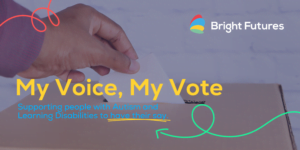Executive function and self-regulation skills are mental processes that enable us to have attention, understand and remember instruction, plan things, and have a level of organisation that allows us to handle multiple tasks. This is a key part of development for the brain, as these processes come into play in our daily life.
These skills depend on three different types of brain function:
Working memory – This controls our ability to retain distinct pieces of information over short periods of time.
Mental flexibility – This helps our attention to either maintain or divert depending on different demands that require a response.
Self-control – With this we are able to organise, set our priorities and resist acting upon any impulsive actions that may come to mind.
We all aren’t born with these skills – this is something that must be developed as we grow up. We have the ability to develop these skills but some children may need more support than others.
During development children rely on the adults in their life to help them develop, so if they aren’t receiving the support they need from them, then their skill development can become impaired. In society we have evolved to an extent where we recognise this and have put things in place to help – we have the ability to provide support to the adults caring for the children at home, also making us aware that environmental factors also play a big part in development. There are also education programmes tailored to helping children develop these necessary skills, so that they can constantly subconsciously be developing these skills both at home and at school.
What Is Emotional Regulation?
Emotional regulation is defined as the ability to understand and separate your emotional responses to a situation that can cause a varied range of emotions. It’s important to have emotional regulation as it helps us calm down and prevent emotional states that could be dangerous to ourselves or others.
Regulating our emotions is a skill that has to be developed, typically as we grow up. Every person is different so some people may grow up in the same environment, but both have different levels of ability to control their emotions.
How Does Autism Impact Emotional Regulation?
People with autism can sometimes have a harder time regulating their emotions, they may not be able to organise their emotions or thinking during moments that require social understanding. Autism impacts a person’s ability to effectively understand social information, this difficulty in social thinking can affect a person’s ability to be comfortable in social situations – leading to social confusion, anxiety and dysregulation.
How Can I Recognise Someone Autistic Is Dysregulated?
It’s important to remember that each person who has autism is an individual, one method may work for one person – but that doesn’t mean it will work for another. This also means that each person’s emotional regulation skills differs from someone else’s, the easiest way to spot dysregulation is to be aware of their emotions and look out for any change in their behaviour that could indicate they are struggling. Begin communicating with them, explore ways in which they can effectively communicate to you how they are feeling. Take into account any changes in their environment or routine, is there something new that could be affecting them?
Environment changes could have a lot of sensory input and result in a sensory overload, it’s important to notice and alleviate these factors. Emotional regulation in autism is complex, that’s why the most important thing we can do to help people with autism is to be understanding and patient.
What Do Sensory Issues Feel Like?
Unique sensitivities to certain types of sensory input can create challenges in a wide range of everyday situations. Being exposed to these sensory sensitivities can be both emotionally and physically draining for someone with autism. To balance out a person’s sensory system they may begin stimming, this can help someone stay calm and block out the uncomfortable sensory input.
How Can I Help Someone With Autism Regulate Their Emotions?
To be able to regulate our emotions, we have to have a strong understanding of emotions. The first step in being able to help achieve emotional regulation in autism is to help the person understand and identify emotions, whilst knowing what they look and feel like. Helping them understand the basics of emotions allows them to become more self aware, making it easier for them to understand how to manage over or under stimulation in an environment.
What Are Self-Soothing Behaviours With Autistic People?
Like we mentioned prior, every person is an individual so they will all have different experiences and different thought processes. When we are trying to identify some self-soothing behaviours that can take place with autistic people we need to understand some are sensory avoidant whilst others seek sensory input to regulate their emotions. People who are sensory avoidant may be seen to soothe themselves by getting away from stimuli such as sounds, smells and textures.
People who seek sensory input to regulate their emotions help regulate their emotions by seeking more sensory input from their environment. They may achieve this by fidgeting, making loud noises, or pacing.







